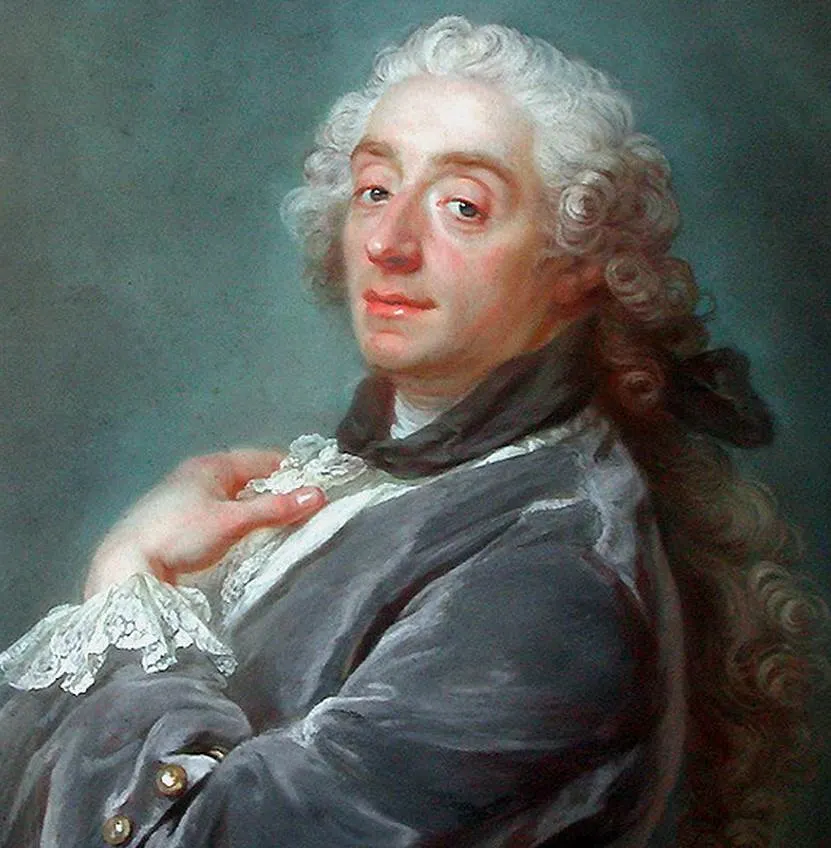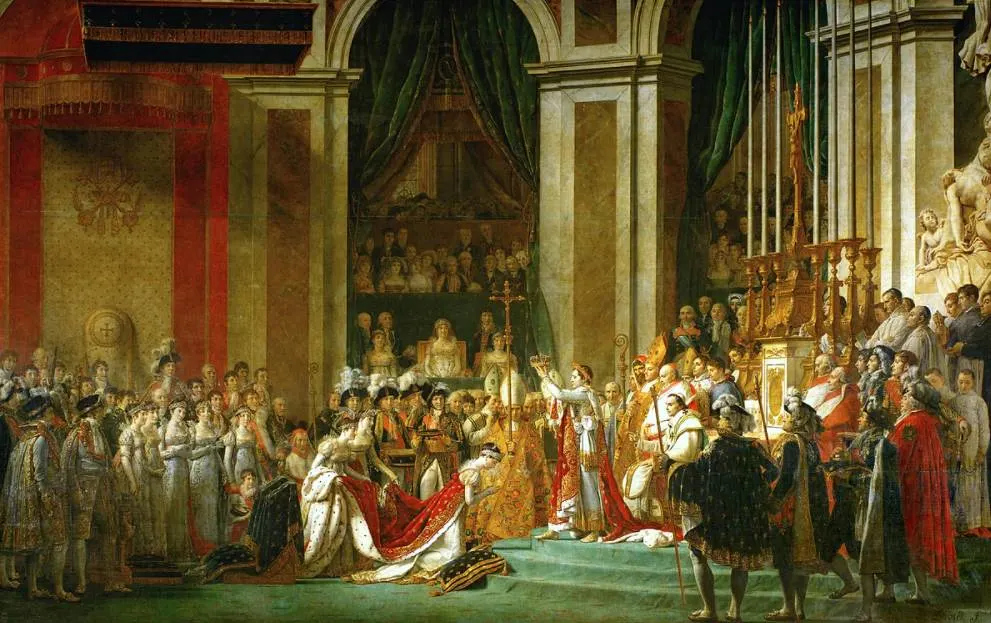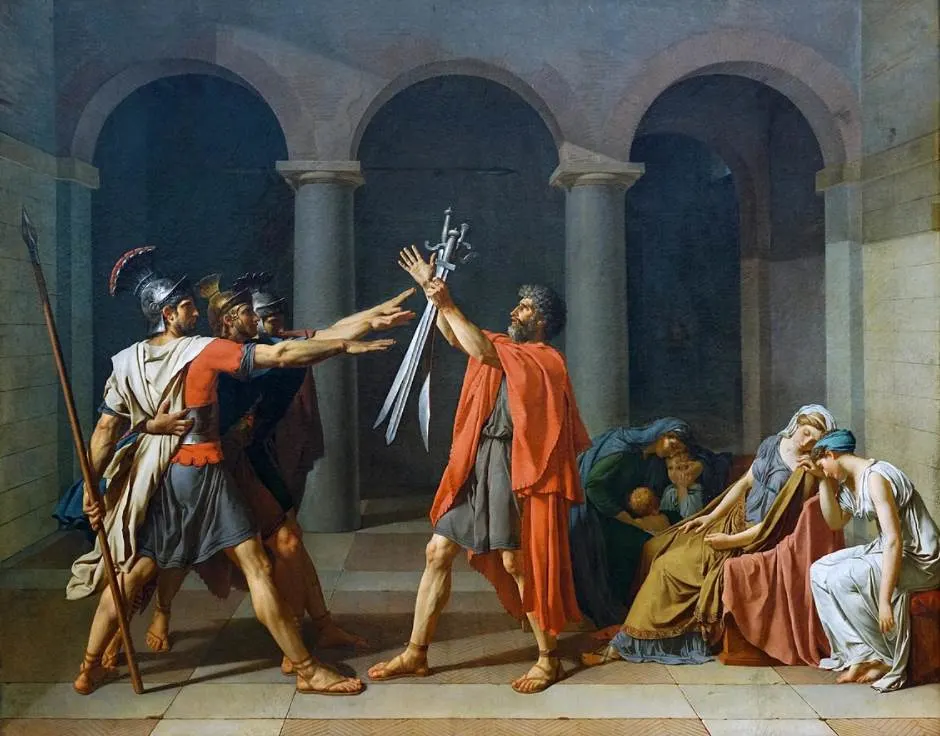As the end of the Ancien Régime in France, the political and social system in the country for multiple centuries was approaching in the late 18th century, it marked a shift in the world of art as well.
One person embodied the transition from the exuberant and frivolous art of the Rococo artists to the classical austerity of the Neoclassical artists that came with the radical changes in France at the end of the 18th century.
In this article, you’ll discover some of the most interesting facts about Jacques-Louis David, one of the most prominent artists of his time whose amazing paintings became a great inspiration for numerous artists who followed him.
1. He was born into a rich family in Paris in the late 1740s
Jacques-Louis David was born on August 30, 1748, in Paris. His family was prosperous and although his father was killed during a duel when he was just 9 years old, it allowed him to live with his even richer uncles who were renowned architects.
He studied at the Collège des Quatre-Nations, one of the departments of the University of Paris, and his talent for drawing didn’t go unnoticed. despite receiving a proper education, he used most of his spare tie to sharpen his drawing techniques during his teenage years.

2. He was briefly trained by one of the leading Rococo artists
The artist grew up during a time that the Ancien Régime or “Old Regime” in France was still firmly in charge. The exuberant lifestyle of the French Kings and their household was reflected in the Rococo style which put a high emphasis on grandiose settings.
Although his mother had hoped that he would end up becoming an architect like his uncles, his talent for drawing was too great. She reluctantly let her son be tutored by François Boucher (1703-1770), the leading Rococo painter in France at the time and the main court painter of King Louis XV.
Rococo was running on its final legs, as was the Ancien Régime, so Boucher wasn’t able to convey his artistic preferences to David who preferred the emerging influence of classical art.
Because of this, he was eventually tutored by Joseph-Marie Vien (1716-1809), a man who eventually became the final “Premier Peintre du Roi” just before the start of the French Revolution.

3. It took 4 attempts for him to win the prestigious Prix de Rome

Joseph-Marie Vien was a winner of the Grand Prix of Rome in the year 1745, and that was the ambition of the young David as well. This prize allowed artists to study in Rome for 3 to 5 years, learning from art created in ancient times to artworks created by Renaissance artists.
Between 1771 and 1773, he submitted 3 different works called “Minerva Fighting Mars,” “Diana and Apollo Killing Niobe’s Children,” and “The Death of Seneca.” None of these allowed him to win the prestigious prize.
Jacques-Louis David wasn’t the easiest character in the history of art and instead of analyzing what went wrong, he blamed the Royal Academy that awarded the scholarship in Rome.
He finally won the prize with the 4th work that he submitted called “Erasistratus Discovering the Cause of Antiochus’ Disease” (1774) and he started his studies in Rome in October 1775, along with his mentor Vien who became the director of the French Academy in Rome that year.

4. He was a fervent supporter of the revolution but escaped the guillotine
During his stay in Rome, he met German artist Raphael Mengs (1728–1779), one of the pioneers of the Neoclassical art movement. He also read the theoretical writings by Johann Joachim Winckelmann (1717-1768) which are now considered to be the manuscript of the movement.
Although David didn’t like the art produced during antiquity initially, the meeting with Mengs and the world of Winckelmann molded his vision permanently and he sought to create a new and improved approach towards classical art.
The ruins of Pompeii and Herculaneum had been recently excavated during this period in history and he visited these as well in 1779, something that had a deep impact on the young artist.
When the French Revolution started in the late 1780s, he became a friend of controversial figure Maximilien Robespierre and a fervent supporter of the revolutionary’s cause.
His lifelong grudge against the Royal Academy of Painting and Sculpture who rejected his works 3 years in a row finally materialized. Robespierre ended up being executed and David just nearly escaped the same faith in 1794.

5. He created multiple works for his patron Napoleon Bonaparte
David spent 2 spells in prison in the years 1794 and 1795 and when Napoleon became the First Consul of France and later Emperor of the French, he joined this political movement eagerly.
It’s during this period that he created some of the most famous works of art depicting Napoleon Bonaparte, including the famous “Coronation of Napoleon” in 1804 at Notre Dame Cathedral in Paris.
He worked on this epic work of art between 1805 and 1807 and didn’t have to dig deep to get inspiration because he was allowed to witness this event with a front-row seat.
He gradually rose up the ranks and initially became a Chevalier de la Légion d’honneur in 1803 and eventually a Commandant de la Légion d’honneur in 1815.
Following the final Fall of Napoleon, he exiled himself to Brussels in what was then the United Netherlands and died there in the year 1825 at the age of 77.

More interesting facts about Jacques-Louis David
6. The 3 rejections by the Royal Academy of Painting and Sculpture for the Grand Prix of Rome weren’t the only reasons why David held a lifelong grudge against this institution.
He was keen on becoming the Director of the French Academy in Rome, the institution that allowed him to study in Italy for a couple of years. They rejected his application because they deemed him to be too young. This didn’t go too well with David as it only fueled his resentment.
7. David spent another period in Rome during the early 1780s and it’s here that he would create a work that defined his entire career.
This work is called “The Oath of the Horatii” (1784) and depicts 3 brothers who swear an oath to their father before leaving to fight in a battle.

8. The artist was sent to prison and although he had been a fervent supporter of the most radical revolutionaries, including the beheaded Robespierre, he cried out his innocence during his incarceration.
He later changed his style from a “Roman-style” to a “Grecian style.” When later asked about his shift in attitude he mentioned:
In all human activity the violent and transitory develops first, repose and profundity appear last. The recognition of these latter qualities requires time and only great masters have them, while their pupils have access only to violent passions.
9. Jacques-Louis David was considered to be the leading artist in France during his time, and some even consider him to be the most influential artist of the late 18th and early 19th centuries.
Apart from being such an important artist himself, he also had many pupils who became equally renowned as artists. Some of these included Antoine-Jean Gros (1771-1835) and Jean Auguste Dominique Ingres (1780-1867). The latter became the leading Neoclassicalartist of the 19th century and a lifelong rival of Romantic artist Eugène Delacroix.

10. David exiled himself to Brussels during the final years of his life and he painted his final work of art here between 1822 and 1824. This work is a great example of the Grecian Style which he adopted during the latter part of his career.
This work is called “Mars Being Disarmed by Venus and the Three Graces” and of it, he wrote:
This is the last picture I want to paint, but I want to surpass myself in it. I will put the date of my seventy-five years on it and afterwards I will never again pick up my brush.
He died in Brussels on December 29, 125, after being struck by a carriage while he was leaving a theater.

